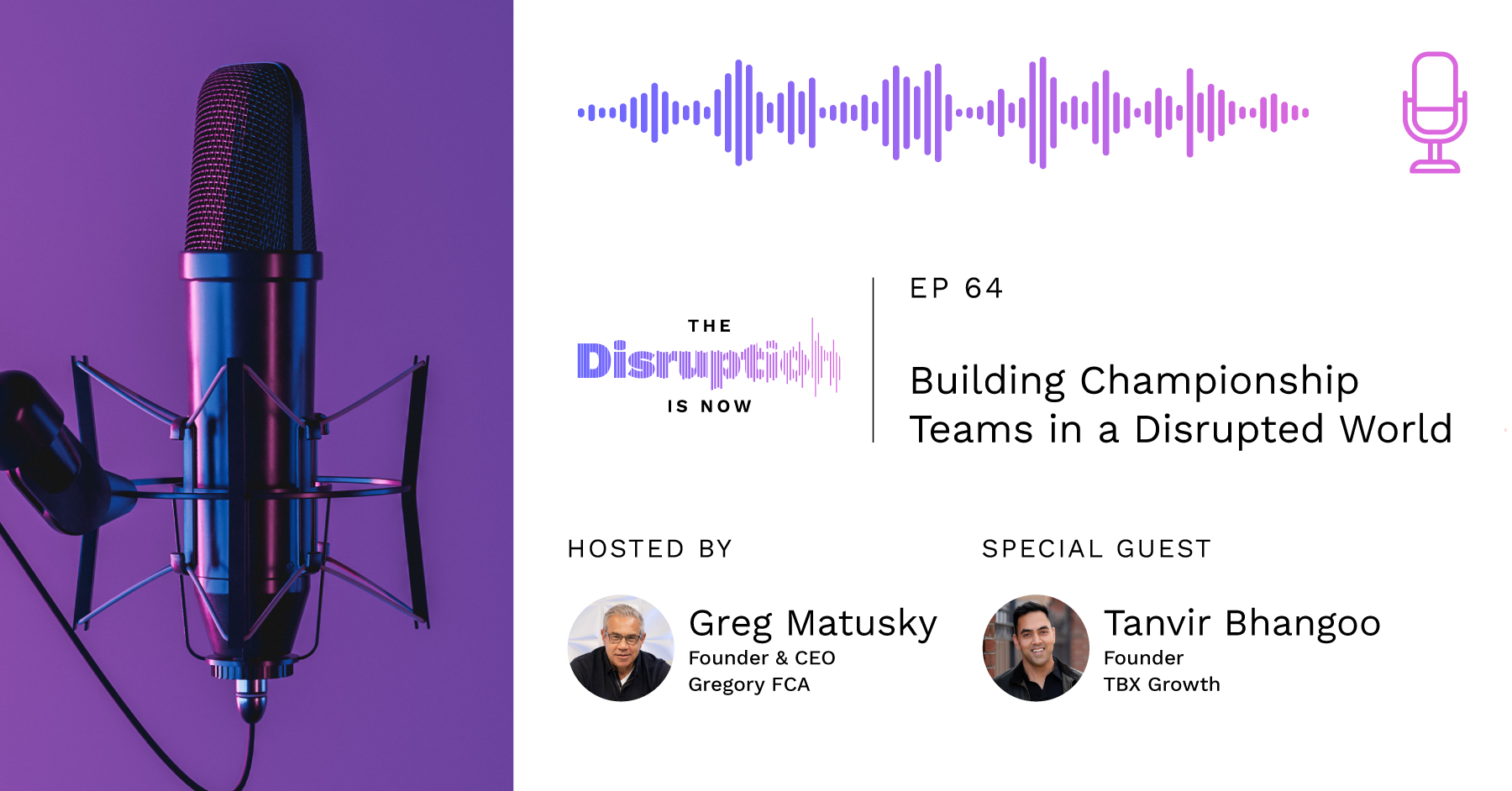ChatGPT launched a wave of disruption that left many leaders and companies scrambling. That wave had been building for years, but few were paying attention or prepared when it arrived.
In this episode of The Disruption Is Now, host Greg Matusky talks with the former college football player turned transformation advisor Tanvir Bhangoo about how to overcome the barriers to AI adoption and build demand from within.
For communicators and marketers facing resistance, burnout, or uncertainty, Tanvir’s playbook is part strategy, part psychology, and completely practical.
Watch now:
Key takeaways
Sudden disruption happens because people aren’t paying attention
Tanvir points out that the sudden explosion of AI was actually a slow building wave and most executives simply missed the signals. They only started paying attention after the headlines turned red hot.
The same delay happened with the internet, the covid-19 pandemic, and digitization. None of them happened overnight, but they were all disruptive because executives didn’t take them seriously until they had hit a tipping point.
Those kinds of delays force rushed decisions, employee resistance, and poor implementation. Leaders are left struggling to win buy-in from employees because they waited too long to get started.
It’s better to be an early adopter than wait for perfect tools
Greg and Tanvir agree that early adoption isn’t about being right, but about being ready.
Greg shares how he used early weekends with ChatGPT to explore its strengths and weaknesses, breaking it on purpose to understand its limits. That experimentation gave him a six-month head start on his industry.
Tanvir echoes the same mindset from his football days: “Make mistakes at full speed.” Even a bad early decision gives you data and momentum that you can’t get by waiting around. Learning what works and what doesn’t becomes a competitive advantage.
Exclusivity and ownership drive adoption
Tanvir tells a story about launching a customer-facing app for a national retail chain. His first attempt flopped. No one wanted to test it, seeing it as more work.
So he reframed it as an exclusive tech committee and asked for just five volunteers. The next day, 25 people signed up. Those insiders became advocates, spreading enthusiasm across the company.
The takeaway: People resist change when it feels imposed. But when you invite them to shape it, they own it.
Our human advantages over AI are eroding fast
In the AI era, communication skills are more valuable than ever, but we’re getting worse at speaking to each other. Tanvir has seen it across teams: Slack debate over minor issues, endless email threads, basic conflicts that should’ve been solved in a 10-minute call.
He blames a mix of the pandemic, remote work, and social media. But the result is real: Fewer people know how to disagree constructively or communicate with clarity.
The professionals who can speak clearly, manage conflict, read the room, and build consensus will have the kind of irreplaceable, in-demand skills that AI can’t match.
Key Moments in the Conversation
- Why the real disruption is caused by leadership inaction (3:41)
- Greg’s AI obsession and his six-month head start (5:10)
- The Berkeley professor who argued against early AI adoption (6:58)
- How Tanvir used exclusivity and ownership to overcome employee resistance (8:29)
- How reframing AI as a career advantage changed Greg’s firm (11:28)
- Why great leadership eliminates the need for buy-in (12:52)
- Why soft skills will outlast any technology wave (17:11)



